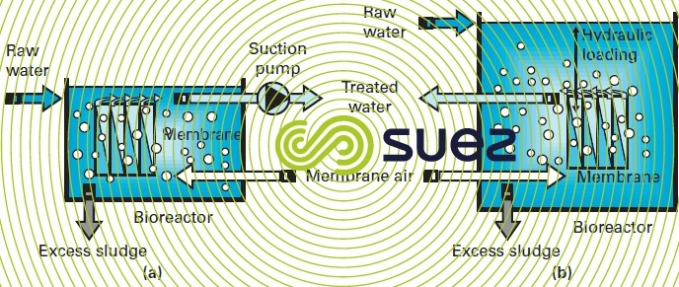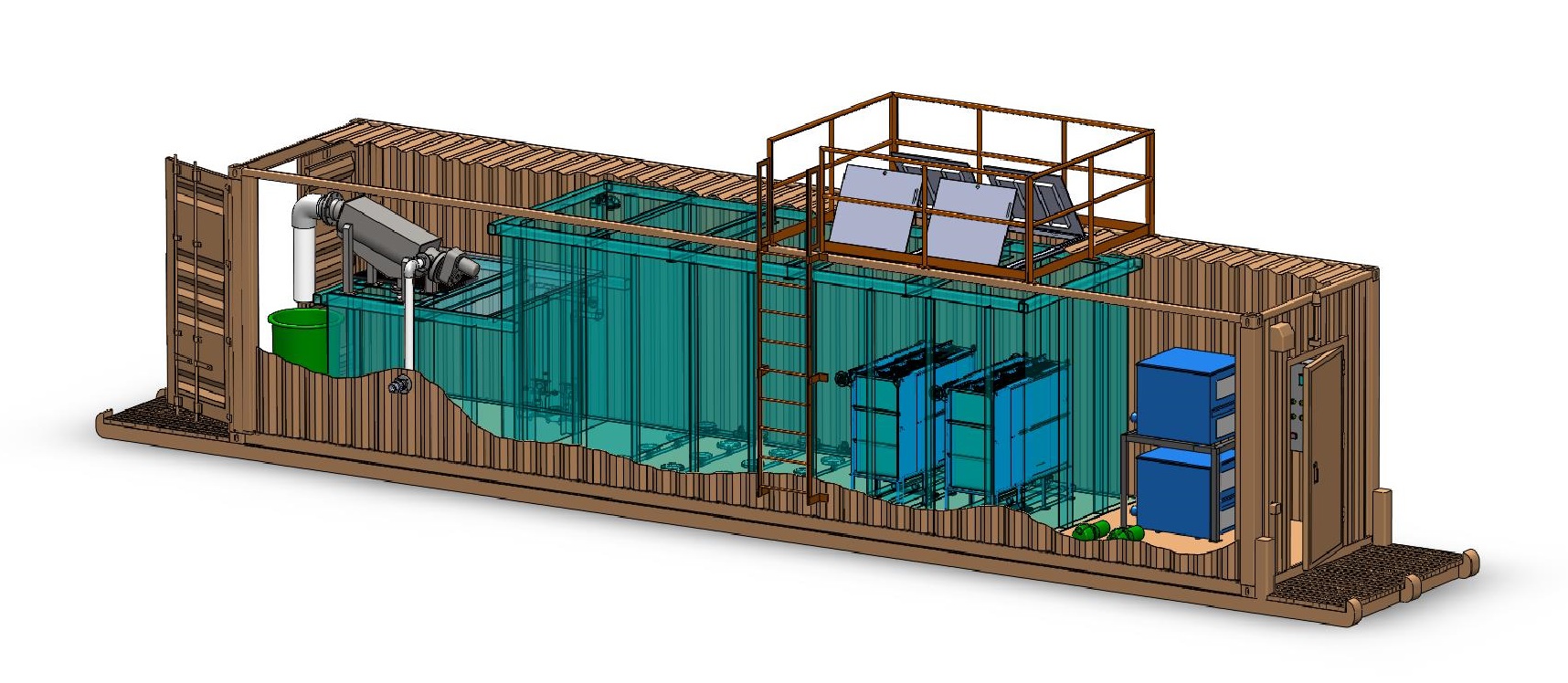Membrane Bioreactor Systems: A Key Technology for Water Reuse and Recycling
Membrane Bioreactor Systems: A Key Technology for Water Reuse and Recycling
Blog Article
Just How Membrane Bioreactors Are Changing Water Filtration Equipments
The emergence of membrane layer bioreactors (MBRs) represents a substantial development in the area of water purification, merging organic therapy processes with sophisticated membrane purification modern technologies. As worldwide water scarcity heightens, the function of MBRs in helping with safe and clean water reuse and sustainable water management comes to be significantly vital.
Overview of Membrane Layer Bioreactors
Membrane layer bioreactors (MBRs) represent a considerable advancement in water filtration innovation, as they integrate biological treatment processes with membrane layer purification. This integration enhances the efficiency of wastewater treatment by making use of bacteria to degrade natural toxins while all at once utilizing semi-permeable membrane layers to separate cured water from put on hold microorganisms and solids.
The MBR system generally consists of a biological activator where the microbial populace metabolizes contaminants, complied with by a membrane purification unit that maintains biomass and enables only clean water to travel through. This double capability results in higher effluent quality compared to traditional treatment techniques. MBRs can be run in both batch and continual flow modes, using adaptability in design and application.
They also enable the recuperation of water for reuse, hence contributing to water sustainability efforts. Generally, MBRs are at the forefront of improving water treatment efficiency and top quality, showcasing the potential for cutting-edge solutions in ecological administration.
Advantages of MBR Innovation
The combination of organic therapy with membrane layer purification provides many advantages for water purification processes. Among the primary benefits of Membrane layer Bioreactor (MBR) innovation is its ability to properly eliminate both inorganic and natural contaminants, bring about premium effluent. The membranes act as a physical obstacle, preventing suspended solids and virus from travelling through, which enhances the general security and integrity of treated water.
Furthermore, MBR systems need a smaller impact contrasted to traditional treatment techniques, enabling for more efficient space usage. This compact layout is specifically beneficial in metropolitan setups where land is restricted. MBRs additionally show operational versatility, suiting differing influent high qualities and flow rates without significant performance degradation.
Additionally, the process supplies improved nutrient elimination abilities, especially for nitrogen and phosphorus, which are vital for stopping eutrophication in getting waters. The reduced sludge manufacturing connected with MBR technology additionally equates to decrease disposal costs, making it an economical option in the lengthy run - Membrane Bioreactor. Overall, the advantages of MBR innovation placement it as a leading choice for ingenious and sustainable water filtration systems, dealing with both environmental and financial issues
Applications in Water Purification
Applications of Membrane Layer Bioreactor (MBR) technology in water filtration are impactful and varied, addressing various therapy needs across numerous fields. MBRs successfully integrate organic therapy processes with membrane layer filtering, making them excellent for metropolitan wastewater treatment, industrial effluent administration, and also safe and clean water reuse initiatives.
In local settings, MBRs are progressively used to improve the top quality of treated wastewater, enabling for compliance with rigorous discharge guidelines and assisting in the recycling of water for find watering and non-potable usages. Their portable style likewise makes them ideal for metropolitan settings where space is limited.
Industrially, MBR innovation is used to deal with procedure water and wastewater, specifically in markets such as food and beverage, pharmaceuticals, and textiles. By properly getting rid of impurities and put on hold solids, MBRs aid markets reduce environmental impacts while recuperating important resources from wastewater streams.
Moreover, MBRs are gaining traction in decentralized water treatment applications, where small systems can be deployed in remote locations or establishing he has a good point regions. This flexibility allows neighborhoods to achieve sustainable water monitoring options, enhancing access to clean water while decreasing dependence on typical therapy methods.
Instance Researches and Success Stories

In an additional example, a fabric production facility in Bangladesh took on MBR modern technology to address its wastewater difficulties. The system reduced chemical oxygen demand (COD) levels from 1,200 mg/L to much less than 100 mg/L, thus satisfying governing standards and dramatically minimizing ecological influence.
The University of Cape Town's MBR setup has proven reliable in treating greywater for non-potable reuse on university. This job not only saves safe and clean water yet likewise serves as an academic design for sustainable practices.
In addition, a fish and shellfish processing plant in Norway utilized MBR technology to treat effluents having high degrees of organic matter, accomplishing over 90% toxin elimination. These situation researches highlight MBR innovation's adaptability and its vital function in boosting water high quality across varied applications.
Future of Water Therapy Solutions
As worldwide water scarcity and pollution difficulties intensify, cutting-edge water therapy options are coming to be progressively necessary to make sure sustainable accessibility to tidy water. The future of water treatment depends on the assimilation of sophisticated innovations that enhance the efficiency and performance of filtration processes. Membrane bioreactors (MBRs) are at the leading edge of this evolution, integrating organic treatment with membrane layer filtration to generate top notch effluent ideal for various applications.
Emerging trends such as resource recovery from wastewater, consisting of nutrients and energy, will even more transform treatment facilities right into green centers. In addition, innovations in nanotechnology and membrane layer materials promise boosted efficiency and durability of filtering systems.

Conclusion
To conclude, membrane layer bioreactors represent a substantial improvement in water purification modern technologies, efficiently combining organic treatment with innovative membrane purification. The various benefits, including boosted effluent high quality internet and reduced spatial demands, make MBRs particularly ideal for urban applications. Their duty in drinkable water reuse and lasting water management highlights their relevance in dealing with international water scarcity obstacles. Continued research study and development will better enhance the efficacy and adoption of MBR innovation, ensuring a durable future for water therapy solutions.
The emergence of membrane bioreactors (MBRs) stands for a substantial advancement in the field of water filtration, merging biological treatment processes with innovative membrane layer purification modern technologies. As global water scarcity magnifies, the function of MBRs in assisting in safe and clean water reuse and lasting water monitoring comes to be significantly critical. They also enable the recovery of water for reuse, thus adding to water sustainability campaigns.As international water deficiency and air pollution obstacles escalate, cutting-edge water therapy options are ending up being progressively necessary to make sure sustainable access to clean water. Their duty in safe and clean water reuse and sustainable water administration highlights their importance in addressing international water deficiency difficulties.
Report this page